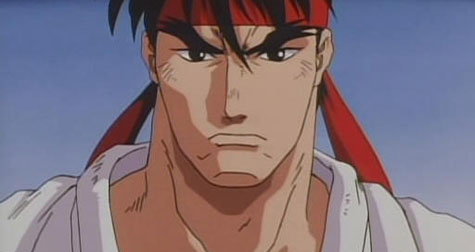The main problem with talking about anime adaptations of video games is knowing where to start. Just go and look at this list over on Wikipedia and it’s clear that games have been a constant source of material for anime movies, films and direct to video releases for decades—there’s literally hundreds of entries, many of which are familiar names, while plenty of others will seem utterly alien to western gamers.
Partly this is because Japan obviously produces a lot of games that never make it to western shores, and in particular it’s because of the popularity amongst Japanese otaku of the infamous “visual novel” (VN), perhaps best described as a digital version of the old “Choose Your Own Adventure” books popular in the 1980s. With their extremely limited gameplay—and often similarly minimal animation—visual novels are probably better described as interactive fiction than games, with the player/reader just making occasional choices that branch the story in various ways. Often based largely around character relationships, dating and soap opera style drama they obviously value storytelling over gameplay, making them prime source material for anime and manga adaptations.
In fact, these adaptations have proved so popular that rarely does a season pass without at least a couple of VN-based anime hitting the screens, but several of the larger VN studios have moved into making the animated versions themselves. Often while the shows themselves make their way over to the U.S. and Europe—notable examples being Steins;Gate, Fate/Stay Night, and Clannad—the games themselves are far less well known outside hardcore fan circles.
With that in mind the following lists do not include any VN-based titles, instead looking at adaptations of franchises that most western gamers will recognize, and is split into those that make you want to insert more coins, and the ones that make you wish you could hit A to skip the cutscenes.
Three of the Best:

Pokémon (1997—forever)
The Pokemon animated series—and its 15 odd spin-off movies—are something of an enigma in anime. On paper they are nothing more than a cynical marketing exercise, a generally badly animated early morning TV show meant to achieve nothing more than hook young children even more into Nintendo’s now decades-spanning, cross platform uber-franchise. They are basically little more than a sophisticated TV ad designed to sell everything from video and collectible card games to plush toys and lunch boxes.
In practice though, the truth is Pokémon rises above all of this to end up being a stupidly watchable show. There’s no denying that the basic animation—and particularly the very distinctive, simple character and monster designs—are a large part of the show’s charm, alongside the show’s equally simple black and white plotlines. The show’s general reluctance to try and explain any backstory or give a rational explanation to the franchise’s universe (I still have no idea what Pokémon are, and it really doesn’t matter) gives the whole thing an enjoyable WTF factor. It also features, in Team Rocket, perhaps the most likable cast of villains to ever grace a cartoon. For a whole generation of both Japanese and western kids it was their first introduction to anime, and created new legions of fans, while some of us older viewers have fond memories of watching Pokémon marathons on satellite TV while—how can I put this—in various “altered states.” Happy days.

Final Fantasy VII: Advent Children (2005)
Perhaps wanting to emulate Nintendo’s success with expanding Pokémon in to a successful multi-platform entertainment franchise, and obviously following up on the large amounts of cash they had pumped into developing their CGI technologies, Japanese developer Square decided to move into making animation based on their hugely successful Final Fantasy games. Their first stab at this was the pretty but uninteresting Final Fantasy: The Spirits Within, but by the time Final Fantasy VII: Advent Children was released in 2005 things had seemingly got on track, and the studio seemed to have worked out what it was doing.
Based on arguably the best—or at least the most popular—incarnation of the long-running Japanese RPG franchise, Advent Children made the rather obviously effective decision of basing itself around the games’ best known and loved characters, and in particular the enigmatic fan favorite Cloud. Arguably this is also the anime’s biggest weakness as well as it’s strength—if you’ve not played the game and don’t know the characters and their world it might be a bit baffling at first, making Advent Children a truly fan-oriented work. That aside its combination of great action set pieces with familiar characters makes it a thrilling watch, and it still remains one of the best examples of CGI anime ever produced.
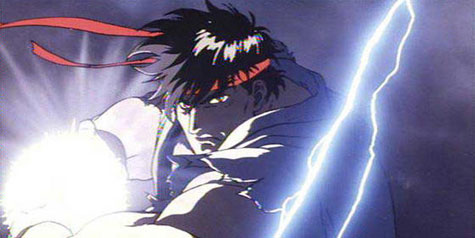
Street Fighter II: The Animated Movie (1994)
The 1994 Street Fighter anime movie has a special place in a lot of western fans’ hearts—not just because it is infinitely better at capturing the feel of the game than the abysmal live action movie released the same year, but also because it’s violent, action-filled approach to animation came at just the right time to satisfy the needs of those of us that had been introduced to the medium through movies like Akira and Ninja Scroll. Getting a 15 certificate when it was released on video here in the U.K., it was one of distributor Manga UK’s biggest hits at the time, largely because the company very effectively had learned to trade on anime’s more controversial aspects to create a buzz amongst nerdy young fans, and released the movie uncut, including some choice swearing and the now legendary slightly graphic Chun-Li shower scene. But outrageous fan service aside, Street Fighter II: The Animated Movie worked primarily because it kept non-essential drama to a minimum and concentrated on relentlessly brutal action and fight scenes—making it perhaps the best anime at capturing the essence of it’s video games roots to date.
…and Three of the Worst:
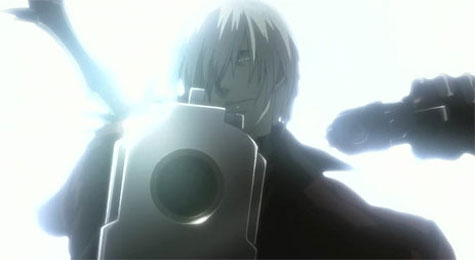
Devil May Cry (2007)
If you owned a Playstation 2 at the beginning of this century then there’s a very high possibility that you have fond memories of Capcom’s Devil May Cry games, which centered on a brutal and stylish roving brawler by the name of Dante, a demon hunter out to seek revenge for the death of his family. With such a distinctive and enigmatic hero and such over the top gun-and-sword-play action it would be a natural assumption to make that it was in fact based on an anime series—it wasn’t, but making a spin-off anime series seemed like a no-brainer. In fact it would take until 2007 for a twelve-part series to emerge.
I don’t know what happened between the six years following the game’s release and the DMC anime. It could have been a number of things, arguably—certainly changes were starting to take place in the anime industry and fandom—changes that I won’t go in to detail about here in order to preserve our sanity. Let’s just say that things changed—the demographic of anime viewers in Japan shifted, and they became less interested in action and violence and more in relationships and drama. Which is just fine. But the latter two are not particularly what anyone who has played the any of the games would call the main strengths of the DMC franchise.
That, apparently, didn’t stop (the usually great) studio Madhouse from trying to mould DMC into something that would work for newer fans. Dante was transformed from an achingly cool, wisecracking demon hunter exploring twisted environments into an achingly annoying, slightly emo, down on his luck paranormal investigator taking jobs in a very mundane looking city.
Things came to an unbearable head at the end of the very first episode when he was saddled with looking after an infuriatingly cute little girl called Patty, who spends most of her screen time throughout the next eleven episodes decorating Dante’s office with infuriatingly cute and girly stuff. Why? I have no idea. Yeah, admittedly each episode does have a sprinkling of demon-killing violence, but it often feels like what should be the show’s main focus is just a messy afterthought, and you end up praying that Dante would turn his gun and sword on little Patty. Repeatedly.
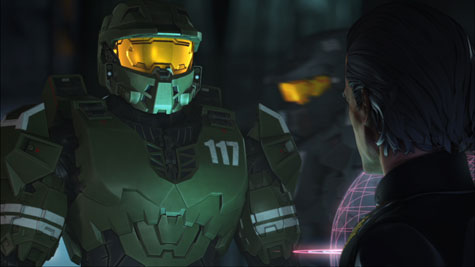
Halo Legends (2010)
You can see straight away what Microsoft was trying to achieve with Halo Legends. Upon the success of The Animatrix, it handed its precious flag ship franchise over to a bunch of Japanese anime studios to make unique, stand-alone productions for a compilation release. And they weren’t just any studios either—Studio 4°C, Production I.G., Bones, and Toei were among the companies involved—all four considered at the time to be part of the highest echelons of the anime industry in terms of production levels and commercial success. As names were announced hype around the project increased—at one point Microsoft proudly disclosed that anime legend Mamoru Oshii (Ghost in the Shell, Patlabor) would be directing one of the segments himself.
But, as we all know, hype is a dangerous thing. It turns out Oshii wasn’t directing anything—he was actually just a “creative supervisor,” which I’m guessing means he just got some Xbox Live points in exchange for his name being on there. As a huge fan of his work, I hope he wasn’t too deeply involved in the segment he “creatively supervised”—The Duel, an uninspiring story about two two of the alien baddies—is probably the worst one. Which is saying something, as they are all uniformly terrible. Perhaps the best one is Prototype—an all CGI affair that is briefly interesting because it looks exactly like a better rendered version of Halo’s in-game cinematics. But that gets boring pretty quick when you realize you can’t skip it and then take control of the characters and shoot things, You know, the stuff that makes a game like Halo interesting.
God knows what went wrong here, certainly the talent involved was amongst the very best the industry had to offer at the time, and The Animatrix had been such a deserved success. Perhaps that’s the issue—while The Matrix had rich ideas to draw on and was a huge hit in Japan, Halo is basically just a straight forward shooter and has never caught on with Japanese gamers, meaning that the studios involved felt uninspired and ended up just going through the motions. It certainly feels that way.
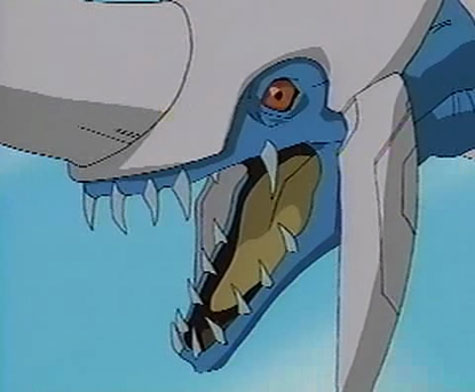
Panzer Dragoon (1996)
Panzer Dragoon might be more of an obscure title for a lot of modern gamers, but for those of us that were lucky to catch it during its release for Sega’s ill-fated Saturn console it is a title spoken in hushed tones. Gameplay-wise it was basically an update of the Sega arcade classic Space Harrier, but it heralded in a new age of home console games where 3D graphics and elaborate art direction would become important factors in game design.
Based in a distant future/fantasy setting where the player rides the eponymous armored dragon, the game was famed for its enchanting and absorbing world, with an art style heavily influenced by the anime movies of Studio Ghibli and the comics of Jean “Moebius” Giraud, who drew the cover art for the game’s release. Yet again, with such vivid worldbuilding and enigmatic settings, it seemed like an anime adaptation was a no-brainer, especially when esteemed studio Production I.G. was given the task.
Again, it’s hard to say for sure exactly what went wrong, but sadly Panzer Dragoon is a disappointing, steaming turd of an anime that left many fans gutted. Certainly money seems to have been an issue—only one direct to video episode was released at just 27 minutes long—this length arguably being Panzer Dragoon’s strongest asset. The plot is a nonsensical mess, but it’d be easy to look past that if the animation captured only 10% of the game’s distinctive art style and ambience. It doesn’t. In fact, to add insult to injury, Production I.G seem to have decided that Panzer Dragoon would be a good excuse to try out this computer generated imagery business that everyone was talking about in the mid 90s, resulting in some of the worse mismatches of badly drawn 2D art and terrible CGI backgrounds ever seen. In fact, at times the CGI doesn’t even match the quality of the original Saturn game. Panzer Dragoon—given the right attention and budget—could have been an anime movie to rival Miyazaki’s Nausicca, and instead it’s a huge disappointment best avoided by all but the most sadomasochistic of the game’s fans.
When he’s not writing for Tor.com, Tim Maughan writes science fiction—his critically acclaimed book Paintwork is out now, and has been picking up support from the likes of Cory Doctorow and Ken MacLeod. Last month he had a short story about the gamification of looting—“Limited Edition”—published in New Scientist magazine’s futurism off-shoot Arc 1.3.










